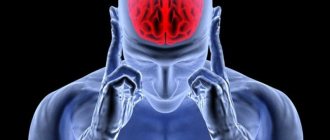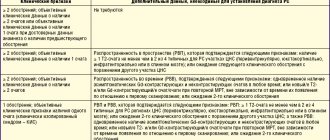Epilepsy is a serious chronic disease characterized by uncontrolled spontaneous seizures of various types. The disease may be congenital or acquired.
The first epileptic seizures can occur at any age; their development is due to many reasons: from genetic predisposition to previous neuroinfections and traumatic brain injuries.
Epilepsy that appears in adults threatens a significant deterioration in the quality of life and even disability. Due to the spontaneity of attacks and the inability to control them, a person loses working capacity. Epileptic seizures negatively affect not only the physical health of the patient, but also his psychological state, which is expressed in the development of psychosis and depression.
There are certain provoking factors, the presence of which can increase the likelihood of epileptic seizures. If they are present, the patient needs to regularly visit a neurologist to prevent attacks and receive timely medical support.
The Yusupov Hospital provides high-quality diagnosis and treatment of epilepsy. Modern medical equipment at the diagnostic center of the Yusupov Hospital provides the most accurate results - identifying pathology in the early stages and establishing the root cause of the disease, which in turn makes it possible to select the most effective treatment regimen. Therapeutic tactics are drawn up taking into account the individual characteristics of the patient and the severity of the pathology.
Thanks to the use of innovative methods, treatment significantly improves the condition of patients with epilepsy and allows them to achieve stable remission.
Causes of the disease
Epilepsy can be idiopathic or symptomatic in nature. The reasons for the development of idiopathic epilepsy remain unclear. The pathology can be diagnosed in people both at an early and mature age, but is most often found in children. Scientists believe that one of the most likely causes of idiopathic epilepsy is hereditary predisposition. In addition, it can occur as a result of genetic abnormalities formed in the child during the prenatal period.
The occurrence of symptomatic epilepsy is associated with one or another negative circumstance that has a negative impact on the structures of the brain. Thus, an epileptic attack is provoked by the following factors:
- repeated flashes of light and color;
- repetitive sounds;
- bright changing pictures, video effects;
- poisoning of various kinds;
- consumption of alcoholic beverages, drugs;
- taking certain medications;
- oxygen starvation;
- hypoglycemic attack - when there is a sharp drop in blood sugar levels.
You need to know that an epileptic seizure in a healthy person can be caused by one of the last three reasons.
Make an appointment
Provoking factors in children
Epilepsy is not considered a childhood disease, but is more often diagnosed at an early age. Depending on the form of the disease, it can manifest itself in different ways. Epilepsy is accompanied by convulsions and loss of consciousness. Early diagnosis in a child contributes to partial or complete recovery. By adolescence, all symptoms may disappear, and children will lead an active, full life.
The most common causes of epilepsy in children are:
- neck and head injuries during birth;
- hypoxia (oxygen starvation) of the fetus;
- infectious diseases suffered by the mother during pregnancy;
- maternal abuse of alcohol and drugs during pregnancy.
The disease can appear in a child immediately after birth or several years later. Minor convulsive movements in children under three months of age may be a consequence of an immature nervous system. However, if they are present, you should consult a neurologist to exclude pathology. If seizures continue to appear after three months of life, intensify and occur spontaneously, it is necessary to show the child to a pediatric neurologist.
Epileptic seizures in childhood can also be caused by high fever, so-called febrile seizures. Some attacks are accompanied by sudden freezing and short-term loss of consciousness. There is also absence epilepsy, which occurs without seizures. The symptoms of epilepsy are quite multifaceted. If there is even the slightest suspicion of epilepsy, then it is necessary to immediately do an electroencephalogram.
Parents need to pay attention to the following symptoms in their child:
- fading;
- loss of concentration;
- no reaction to stimuli;
- high temperature;
- fainting;
- lethargy;
- headache;
- nausea;
- stomach ache;
- dizziness.
If these symptoms occur, call a doctor immediately or take your child to the hospital.
Provoking factors in adults
Hereditary forms of epilepsy do not always appear at an early age. There are cases where patients of older age groups experienced their first epileptic attack, and upon examination it turned out that there was a genetic predisposition. Epilepsy is inherited, but depending on the form, it is not always accompanied by seizures.
The occurrence of epileptic seizures in adulthood is provoked by other factors:
- suffered a stroke;
- brain tumors;
- multiple sclerosis;
- metabolic disorders;
- infectious diseases with brain damage (meningitis, encephalitis, etc.);
- alcohol, drugs and other intoxications.
Traumatic brain injuries can cause epilepsy in people of any age. Damage to the bones of the skull, hemorrhage in the brain and disruption of the integrity of soft tissues may be accompanied by the development of pathological processes with secondary epilepsy.
Symptoms of epilepsy in adults are varied. Sometimes attacks are not accompanied by convulsions and loss of consciousness. From the outside, the patient looks normal, but slightly inhibited. He has a vacant look, he may lose touch with reality and not respond to stimuli. Such symptoms are observed in mild forms of the disease.
Classic manifestations of epilepsy are much worse. The person may fall sharply and begin to convulse. In this condition, his jaws are strongly compressed, so the patient may bite his tongue. Foam appears on his lips. During an epileptic seizure, the patient may harm himself. Often the attack is accompanied by dislocations and fractures. Seizures can also be vegetative - without loss of consciousness or convulsions. They are characterized by the following types of symptoms:
- increased heart rate;
- excessive sweating;
- flatulence and cramping abdominal pain.
Nonconvulsive epilepsy can be caused by factors such as predisposition and exogenous influences. Epilepsy in adults is treatable. Only an accurate diagnosis in the early stages can guarantee success.
Expert opinion
Author: Olga Vladimirovna Boyko
Neurologist, Doctor of Medical SciencesRecently, doctors have noted an increase in cases of newly diagnosed epilepsy. The exact causes of this dangerous neurological disease have not been established. According to statistics, 4-10 people per 1000 population suffer from epilepsy. In Russia, the incidence rate accounts for 2.5% of cases. Numerous clinical studies have led to the following conclusion: 80% of patients with epilepsy live in countries with low and medium levels of development, where there is a high level of injuries and the prevalence of infectious diseases.
To diagnose epilepsy, doctors at the Yusupov Hospital use modern medical equipment. The clinic is equipped with European MRI, CT, and EEG equipment. Blood tests are carried out in a specially equipped laboratory. Experienced neurologists and epileptologists find out the possible causes of the disease. This is necessary to develop the correct treatment. Therapy is selected based on the individual characteristics of each patient. The drugs included in the treatment regimen meet European safety and quality requirements. To minimize the risk of relapse of the disease, patients are provided with preventive recommendations.
Epilepsy and epileptic seizures
Epilepsy is a condition characterized by repeated (2 or more) epileptic seizures that are not provoked by any immediately identifiable causes. An epileptic seizure is a clinical manifestation of abnormal and excessive discharge of neurons in the brain. The clinical picture is represented by sudden and transient pathological phenomena (changes in consciousness, motor, sensory, vegetative, mental symptoms noted by the patient or observer). It is important to emphasize that several “provoked” or due to any distinct causes of epileptic seizures (for example, in the acute period of TBI or in patients with a brain tumor) do not allow the patient to be diagnosed with epilepsy.
CLINICAL PICTURE
Epileptic seizures
During the clinical examination of patients, special attention should be paid to a thorough history taking, describing the details of the attack, the therapy performed, its effectiveness and side effects, identifying neurological and mental disorders, as well as damage caused by attacks. Attention should be paid to the frequency of attacks, the presence of their various types, chronobiological features (confined to a certain time of day, phase of the menstrual cycle, etc.), the presence of an aura, the first objective signs of the development of an attack, the sequence and variability of symptoms, changes in consciousness during an attack , the patient's condition after the attack. Complex partial seizures often begin with an aura. Depending on the irritation of the area of the brain from which the epileptic discharge begins, several main types of aura are distinguished - vegetative, motor, mental, speech and sensory. In some cases, with partial seizures, simple or complex, pathological bioelectrical activity, initially focal, spreads throughout the brain, and a secondary generalized seizure develops. A secondary generalized attack may begin suddenly. At the same time, in many patients, an attack begins with the appearance of an aura, which in the same patient often has a stereotypical character. After the aura, which lasts several seconds, the patient loses consciousness and falls. The fall is accompanied by a kind of loud cry caused by a spasm of the glottis and convulsive contraction of the chest muscles. Convulsions immediately appear, initially tonic - the torso and limbs are stretched in a state of tension, the head is thrown back and sometimes turned to the side contralateral to the lesion, breathing is held, the veins in the neck swell, the face becomes deathly pale with gradually increasing cyanosis, the jaws are convulsively clenched. The tonic phase of the attack lasts 15-20 s. Then clonic convulsions appear in the form of contractions of the muscles of the limbs, neck, and torso. During the clonic phase of an attack lasting up to 2-3 minutes, breathing is often hoarse and noisy. The mouth produces foam, often tinged with blood, due to biting the tongue or cheek. The frequency of clonic convulsions gradually decreases, and at the end of them, general muscle relaxation occurs. During this period, the patient does not react even to the strongest irritants, the pupils are dilated, there is no reaction to light, tendon and protective reflexes are not evoked, and involuntary urination often occurs.
SYMPTOMS
The most common symptoms: nausea and/or discomfort in the stomach, weakness and/or dizziness, headache, transient speech disturbances (aphasia), numbness of the lips, tongue, hands, tightness in the throat, chest pain or difficulty breathing such as lack of air, discomfort in the mouth, drowsiness, unusual perception of everything around. Complex partial seizures are often accompanied by automated movements that seem insufficiently focused and inadequate, and contact with the patient is impossible or difficult.
TREATMENT
Treatment should be carried out exclusively by a neurologist. Self-medication is unacceptable. Treatment of epilepsy is a long process (many years). Before prescribing antiepileptic drugs, the doctor must conduct a detailed clinical examination of the patient and EEG, which is supplemented by analysis of ECG, kidney and liver functions, blood, urine, and MRI data. The patient and his family should receive explanations about taking the drug and be informed both about the actually achievable results of treatment and about possible side effects.
General tactics for treating patients with epilepsy • Elimination of factors contributing to the occurrence of attacks (lack of sleep, physical and mental stress, hyperthermia). • Correct diagnosis of the type of epileptic seizures and the form of epilepsy. • Prescription of adequate drug therapy. • Attention to education, employment, recreation of patients, social problems of patients with epilepsy. • Identification of those causes of seizures that can be treated (epileptogenic zones in the brain, for example in the hippocampus). Treatment begins after a diagnosis of epilepsy is established (if there are at least 2 unprovoked seizures). Only in isolated cases (with a high probability of a repeat attack and its danger for the patient due to, for example, somatic pathology) antiepileptic therapy is prescribed after one epileptic attack.
The first signs of an epileptic seizure
Often, the patient and his family are not aware of the presence of epilepsy until the first attack. It can be quite difficult to determine the reasons for its development and the specific irritant for the first time, however, the fact that an epilepsy attack is approaching can be suspected if the patient has certain signs:
- headache a few days before an epileptic seizure;
- sleep disorders;
- severe stress;
- nervousness and irritability;
- decreased appetite;
- loss of appetite.
During a convulsive attack, muscle tension and lack of response to any irritants are noted - patients do not hear sounds, do not respond to touch, pain, their pupils do not narrow or dilate. After an epileptic seizure, people become lethargic and drowsy; to restore strength and normalize their condition, they need rest and good sleep.
If convulsions last for a long time and symptoms worsen, patients need qualified medical care, for which they must immediately call an ambulance and, before their arrival, make efforts to prevent injury to the patient during convulsions. Without medical attention, status epilepticus can be fatal.
Manifestations of epileptic seizures
Epilepsy is characterized by uncontrolled spontaneous seizures, the occurrence and intensity of which cannot be predicted in advance. The disease can be suspected after the first attack occurs. If the attack recurs, you should immediately consult a neurologist, since in the absence of proper treatment, the frequency of epileptic seizures only increases over time.
One of the frequent precursors of an epileptic attack is the so-called aura. It is a subjective sensation of a hallucinogenic nature that occurs in a patient with epilepsy shortly before the onset of an attack.
The aura can be manifested by the following sensations:
- certain sounds (ringing or tinnitus, melody, other sounds);
- some odors;
- visual visions;
- a feeling of deja vu;
- headaches;
- increased anxiety, etc.
Certain types of seizures, such as absence seizures, are not accompanied by an aura. During absence seizures, patients lose consciousness. The patient freezes in place and does not respond to actions or words. In this case, fainting does not happen, the person simply seems to freeze. In cases of complex absence seizures, patients experience repetitive motor acts: during an attack, the eyeballs, lips, and tongue may move.
In reflex epilepsy, the appearance of seizures is provoked by a certain irritant. An epileptic seizure in such cases can begin as a result of exposure to bright light, a flash of light, light music in a nightclub, or a fast video sequence with a frequently changing picture. In some patients, the onset of an attack is preceded by emotional overstrain and listening to certain sounds. Therefore, people suffering from reflex epilepsy need to exclude situations with provoking factors.
In addition, epilepsy may be characterized by the following symptoms:
- convulsions: during an attack, tonic or clonic convulsions appear in the muscles of the upper and lower extremities;
- disorder of consciousness: some simple epileptic seizures are accompanied by the preservation of consciousness, others by turning it off or the patient falling into a coma. In addition, during an epileptic seizure, an epileptic may see hallucinations and mentally move to another place;
- autonomic disorders: during an attack, patients experience changes in pulse, blood pressure, and vascular tone;
- memory impairment: after the end of an epileptic attack, the patient most often cannot remember what happened to him. As the disease progresses and the frequency of attacks increases, epileptics experience impaired speech and thinking, which leads to dementia.
In the early stages of the disease, as a rule, simple epileptic seizures occur, characterized by a short duration and the absence of loss of consciousness. As the disease progresses, the condition worsens and attacks become more frequent with more noticeable consequences.
Make an appointment
Chapter 3. Fainting and epileptic seizures
Fainting
Characterized by general weakness, loss of postural tone, inability to rise and loss of consciousness. It begins with “not feeling well,” blurred vision, tinnitus, or sweating. It can come very quickly, without warning. The skin becomes pale or ashy, and the pulse weakens. Complete loss of consciousness can be prevented by laying the patient down. In a horizontal position, blood supply to the brain improves. Then the filling of the pulse improves, the skin acquires its previous color, and consciousness returns to normal.
Weakness
It should be defined as a loss of strength with a feeling of imminent loss of consciousness (presyncope).
Epileptic seizure
A sharp disturbance in the electrical activity of the brain, clinically manifested by changes in consciousness and (or) motor, sensory and behavioral symptoms (see Chapter 167, Epilepsy).
Differences between fainting and an epileptic seizure
Epileptic seizures can occur at any time of the day, regardless of the position of the patient’s body in space; fainting rarely occurs in a horizontal position (with the exception of a Morgagni-Adams-Stokes attack). When fainting, pallor is obligatory, while during an epileptic seizure, cyanosis or hyperemia of the skin is possible. Seizures are often preceded by an aura, the nature of which allows one to determine the location of the epileptic focus. Trauma from falling during a seizure is more common than from fainting. The unconscious period usually lasts longer during a seizure; consciousness is restored slowly after a seizure and immediately after fainting. Involuntary urination is characteristic of a seizure and is rare with fainting. Repeated attacks of loss of consciousness (several times a day or a month) in a young patient are more likely to indicate a seizure than fainting. The listed signs, in combination with EEG changes characteristic of epilepsy, make it possible to differentiate an epileptic seizure from fainting.
Etiology of syncope
Most often, these are processes leading to a decrease in cerebral blood flow (Table 9-1).
Table 9-1 Causes of repeated attacks of weakness and disorders of consciousness
Circulatory (reduced blood flow in the brain)
A. Inadequate vasoconstrictor mechanisms
1. Vasovagal (vasodepressor) reflex. 2. Postural hypotension. 3. Primary autonomic failure. 4. Pharmacological sympathectomy (caused by antihypertensive drugs: methyldopa, hydralazine) or surgical. 5. Diseases of the central and peripheral nervous system, including the autonomic one. 6. Syncope caused by hypersensitivity of the carotid sinus (see also “Bradyarrhythmia” below).
B. Decrease in circulating blood volume (hypovolemia)
1. Blood loss - gastrointestinal bleeding. 2. Addison's disease.
B. Mechanical reasons that reduce venous return
1. Valsalva test (breath holding with straining). 2. Cough. 3. Difficulty urinating. 4. Atrial myxoma, thrombosis of an artificial heart valve.
D. Decreased cardiac output
1. Obstruction of ejection from the left ventricle: aortic stenosis, hypertrophic subaortic stenosis. 2. Obstruction to pulmonary blood flow: pulmonary stenosis, primary pulmonary hypertension, pulmonary embolism. 3. Myocardial: widespread myocardial infarction with pumping failure. 4. Pericardial: cardiac tamponade.
D. Arrhythmias
1. Bradyarrhythmia. A. AV block (II and III degrees) with MAC syndrome. b. Ventricular asystole c. Sinus bradycardia, sinoatrial block, cessation of sinus node activity, SSSS. d. Sinocarotid syncope (see also “Inadequate vasoconstrictor mechanisms” above), e. Glossopharyngeal neuralgia (and other pain syndromes) associated with headaches or neck tumors.
2. Tachyarrhythmia.
A. Episodes of ventricular tachycardia with or without concomitant bradyarrhythmia. b. Supraventricular tachycardia without AV block.
Other causes of weakness and episodes of confusion
A. Disturbance in the composition of blood entering the brain
1. Hypoxia. 2. Anemia. 3. Hypoventilation - reduced CO2 content (weakness is common, but fainting is rare). 4. Hypoglycemia (episodes of weakness are typical, presyncope is less common, fainting is rare).
B. Brain causes
1. Transient ischemic attacks. A. Extracranial vascular insufficiency (vertebrobasilar, carotid). b. Diffuse spasm of cerebral arterioles (hypertensive encephalopathy).
2. Emotional disorders, anxiety, hysterical attacks.
Types of disease
The following types of epilepsy are observed in patients of different age groups.
- Juvenile myoclonic epilepsy. Mostly occurs in teenagers. The attacks occur after waking up and are sometimes not accompanied by convulsions.
- Progressive myoclonic epilepsy. It is difficult to treat and can develop into a more complex and dangerous form of the disease throughout life.
- Symptomatic epilepsy. Older people suffer. The first signs of the disease may appear up to 30 years of age. The causes are head injuries and diseases of the nervous system. Due to the varied manifestations of the disease, it is difficult to diagnose as the symptoms can be misleading and the patient may be misdiagnosed even after a thorough examination.
- Temporal lobe epilepsy. Affects the temporal lobes of the brain. A common symptom is a state of “déjà vu.” This form of epilepsy also causes anxiety disorders, uncontrollable outbursts of anger and other emotional states.
- Frontal epilepsy. Symptoms vary and depend on which parts of the brain are affected. Affects the motor functions of the human body. The manifestations of this disease often do not cause concern. The patient may move his eyes and tongue rapidly, and stagnate. From the outside it may seem that a person is simply experiencing nervous excitement. At the same time, a person cannot organize his thoughts, experiences many emotions at the same time and cannot calm down or concentrate on one thing.
- Parietal epilepsy. It is quite rare. The symptom is visual disturbances or eye sensitivity to flashes of light. The eyes may move uncontrollably or jerk from side to side, and the eyelids may tremble. Severe headaches often occur during or after an attack.
- Absence epilepsy. Symptoms of this disease are characterized by short-term fainting or loss of consciousness. With rare exceptions, absence epilepsy is manifested by a loss of concentration; a person cannot focus, breaks off a sentence mid-sentence and cannot build a logical chain to convey his idea. His movements are unclear, his hands can move uncontrollably, inexplicable sensations arise in his fingers, so the patient wants to stretch his hands.
- Myoclonic epilepsy. Manifests itself with sudden spontaneous movements of the arms and legs. The symptoms of this disease are often ignored and confused with the completely normal hypnogogic myoclonus that everyone experiences when falling asleep.
In addition to the classification of epilepsy, individual forms of epileptic seizures are also distinguished.
Read also
Hepatic encephalopathy
Hepatic encephalopathy is a brain lesion that occurs against the background of liver pathology and is caused by liver failure.
There is acute hepatic encephalopathy, which occurs on… Read more
Carpal tunnel syndrome
Clinical manifestation of carpal tunnel syndrome This disorder occurs in the median nerve. The causes are tenosynovitis of the flexor tendon in the hands, acute articular rheumatism, pregnancy...
More details
Vertebral artery syndrome
The main vascular highways carrying blood to the brain pass in the neck - these are two carotid and two vertebral arteries. A decrease in blood flow through the vertebral arteries will lead to the development of acute...
More details
Encopresis
Encopresis is a condition in which a person does not control or feel the urge to defecate, and also cannot control the act of defecation itself; Fecal incontinence significantly impairs the patient’s quality of life,...
More details
Amyotrophy
The word atrophy, translated from Latin, means loss or decrease in the volume of muscle mass or an individual muscle. Most often, muscle atrophy occurs due to limitation of active movements, for example, after...
More details
Diagnosis of the disease at the Yusupov Hospital
No doctor can determine a reliable diagnosis after one single attack, since an epileptic seizure can occur once and in completely healthy people.
In order to establish the cause that provokes the development of an epileptic seizure, neurologists and epileptologists at the neurology clinic of the Yusupov Hospital collect information about the nature of the patient’s complaints, the presence of episodes of epilepsy and other neurological pathologies in the family, the presence of factors that negatively affect the state of the nervous system (regular stress, chronic fatigue and etc.).
After the examination, the neurologist prescribes laboratory and instrumental examinations using the latest equipment from the world's leading manufacturers of medical equipment. The clinic’s specialists interpret the results of laboratory tests and instrumental studies as accurately as possible.
Based on the data obtained, the diagnosis can be confirmed or excluded.
The following modern methods are used to carry out diagnostics at the Yusupov Hospital:
- computed and magnetic resonance imaging;
- angiography;
- electroencephalography;
- neuroradiological diagnostics;
- examination by an ophthalmologist of the fundus;
- biochemical blood test.
In some cases, a lumbar puncture is prescribed - a test that allows you to identify an infection that has affected the brain.
Make an appointment
Treatment at the Yusupov Hospital
To alleviate the condition of patients suffering from epilepsy, the specialists at the neurology clinic at the Yusupov Hospital have several methods at their disposal. Properly selected treatment and strict adherence by the epileptic to medical recommendations can achieve stable remission for a long time.
Drug treatment helps to reduce electrical activity in the lobe of the brain where the disease, previously identified through EEG (electroencephalography), is localized. Treatment of patients at the Yusupov Hospital is carried out using the most modern medications that have a pronounced therapeutic effect and have minimal side effects.
Specialists at the Neurology Clinic of the Yusupov Hospital develop an individual treatment regimen for each patient, taking into account the form of epilepsy, duration and frequency of epileptic seizures, thereby achieving a significant improvement in the condition of patients after seizures.
During drug treatment at the Yusupov Hospital, patients are constantly monitored by doctors who monitor the course of the disease.
In what cases is hospitalization required?
The patient must be taken to the hospital:
- if epilepsy was detected for the first time - to conduct research and select effective treatment;
- with status epilepticus;
- in case of planning surgical intervention (in particular, removal of a brain tumor accompanied by epileptic seizures);
- in order to routinely assess the dynamics of the disease.
For patients at the Yusupov Hospital suffering from epilepsy, additional accompanying methods are used: physical therapy, psychological personality correction, bioacoustic correction of the brain, etc.
Physical therapy exercises, supervised by an experienced physical therapy doctor, can normalize the processes of excitation and inhibition in the brain, which are most often disturbed in epileptics. Special rhythmic movements and breathing exercises have a positive effect on neurons, harmonize the mental state of patients, and prevent stress and other diseases.








